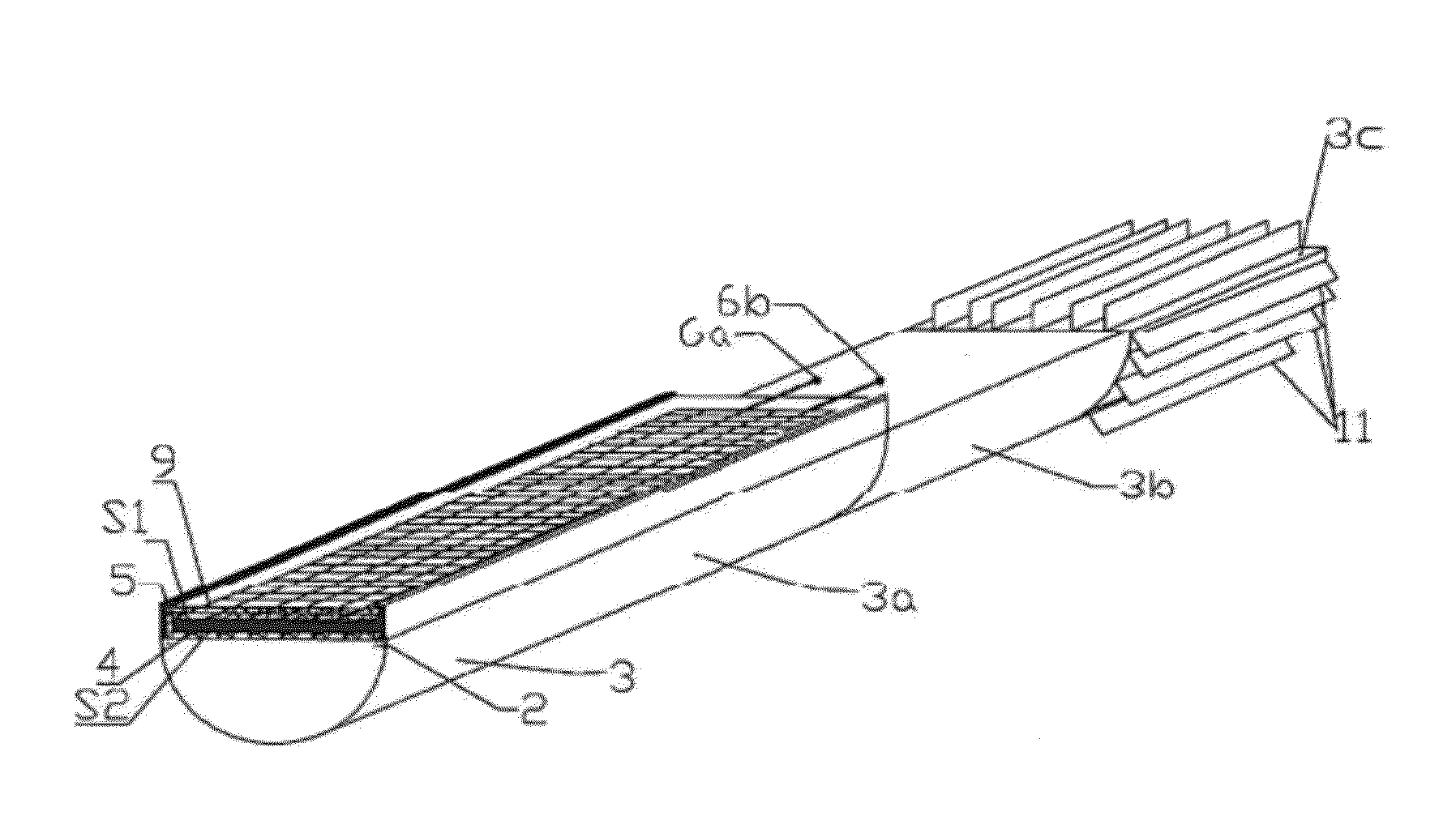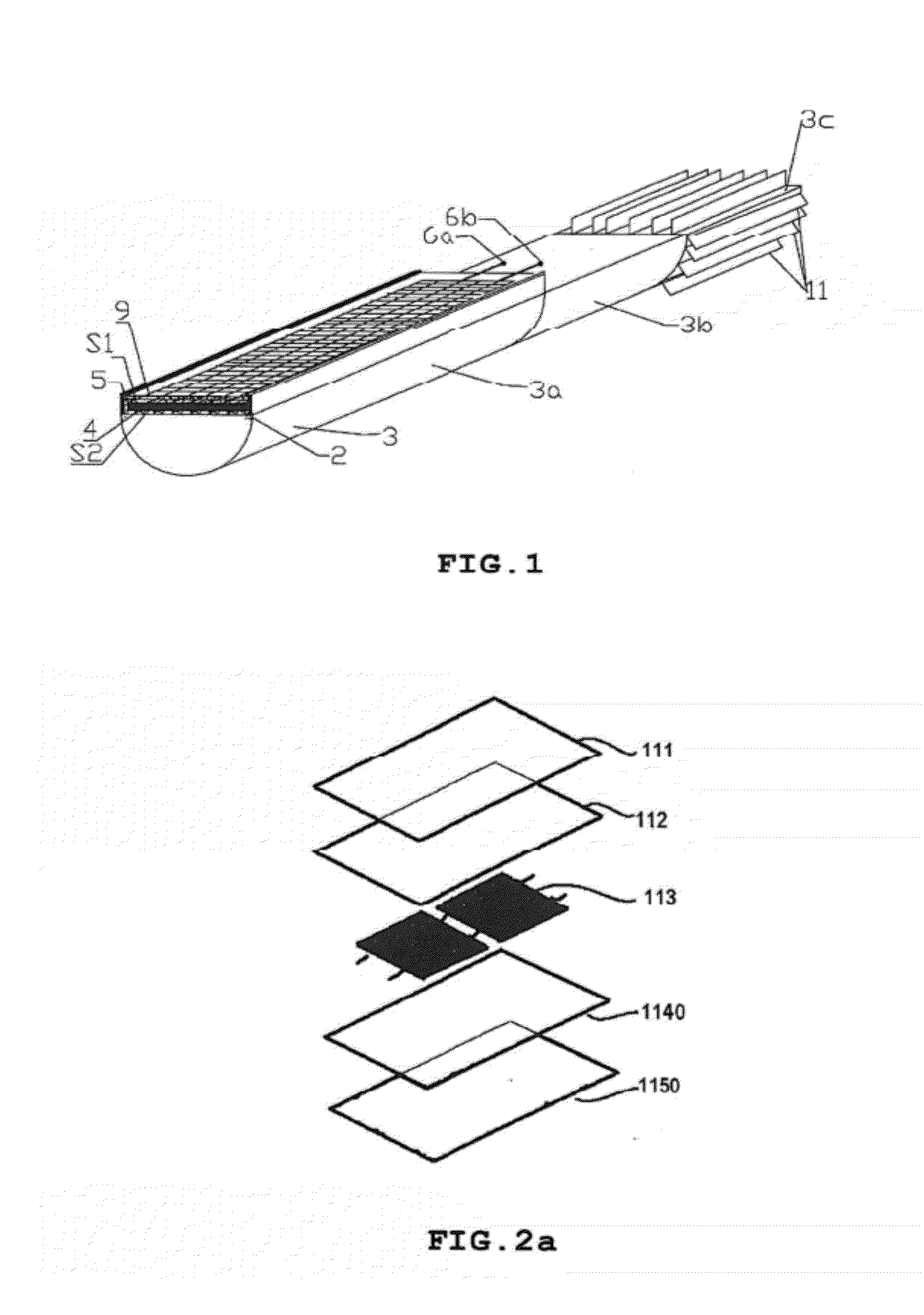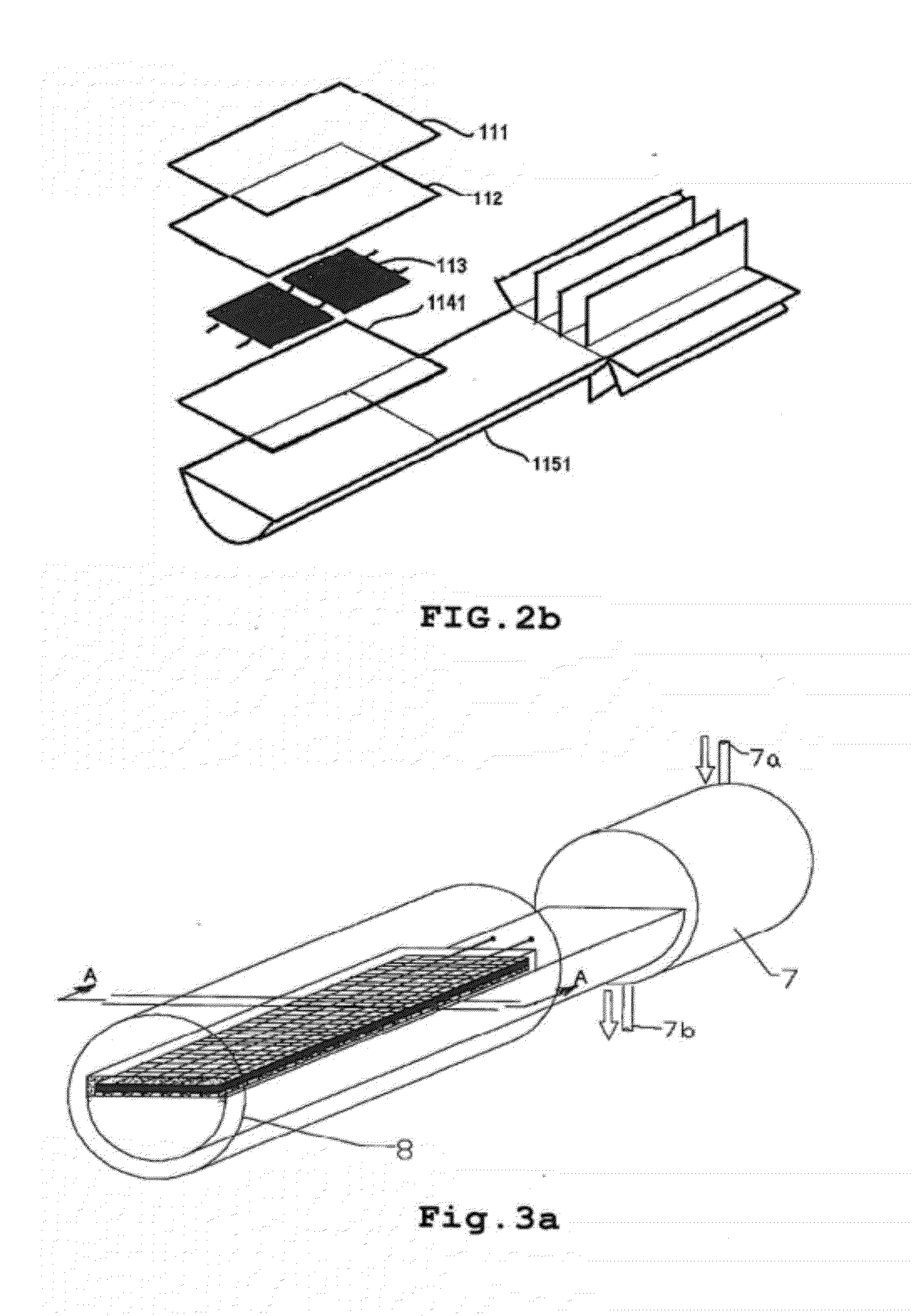Hybrid solar receiver and concentrating solar system comprising the same
a solar receiver and hybrid technology, applied in the direction of hybrid energy generation, indirect heat exchangers, lighting and heating apparatus, etc., can solve the problems of only viable solar photovoltaic projects, the service life of the cell is compromised, and the efficiency is obviously still low. , to achieve the effect of reducing the cost of solar photovoltaic projects
- Summary
- Abstract
- Description
- Claims
- Application Information
AI Technical Summary
Benefits of technology
Problems solved by technology
Method used
Image
Examples
second embodiment
[0106]FIG. 4a shows a second embodiment with a heat pipe having a rectangular cross-section. Heat discharge area (3a) has four planar surfaces and surface S2 is placed on and in contact with one of the four planar surfaces of heat discharge area (3a) of said heat pipe (3) via layer (4).
[0107]FIG. 4b shows a cross-section along line A-A in FIG. 4a. The internal structure of the heat pipe can have grooves acting as a capillary structure but it can also have other capillary structures (not shown) that make it possible to drain the thermal flux in order to make heat transfer more intense.
third embodiment
[0108]FIG. 5a shows a third embodiment with a heat pipe having a circular cross-section. Heat discharge area (3a) is a cylinder and surface S2 is placed on and in contact with the cylindrical surface of heat discharge area (3a) via layer (4).
[0109]FIG. 5b shows a cross-section along line A-A in FIG. 5a. The internal structure of said heat pipe can have grooves acting as a capillary structure but it can also have other capillary structures (not shown) that make it possible to drain the thermal flux in order to make heat transfer more intense.
[0110]FIG. 6a shows another embodiment with a heat pipe having a circular cross-section and fins. Heat discharge area (3a) is a cylinder with one fin on each side of the tube. Surface (S2) is placed on and in contact with the cylindrical surface of heat discharge area (3a) via layer (4). Surface (S2) can be placed on and in contact with said fins. FIG. 6b shows a cross-section along line A-A in FIG. 6a. The internal structure of the heat pipe can...
PUM
 Login to View More
Login to View More Abstract
Description
Claims
Application Information
 Login to View More
Login to View More - R&D
- Intellectual Property
- Life Sciences
- Materials
- Tech Scout
- Unparalleled Data Quality
- Higher Quality Content
- 60% Fewer Hallucinations
Browse by: Latest US Patents, China's latest patents, Technical Efficacy Thesaurus, Application Domain, Technology Topic, Popular Technical Reports.
© 2025 PatSnap. All rights reserved.Legal|Privacy policy|Modern Slavery Act Transparency Statement|Sitemap|About US| Contact US: help@patsnap.com



